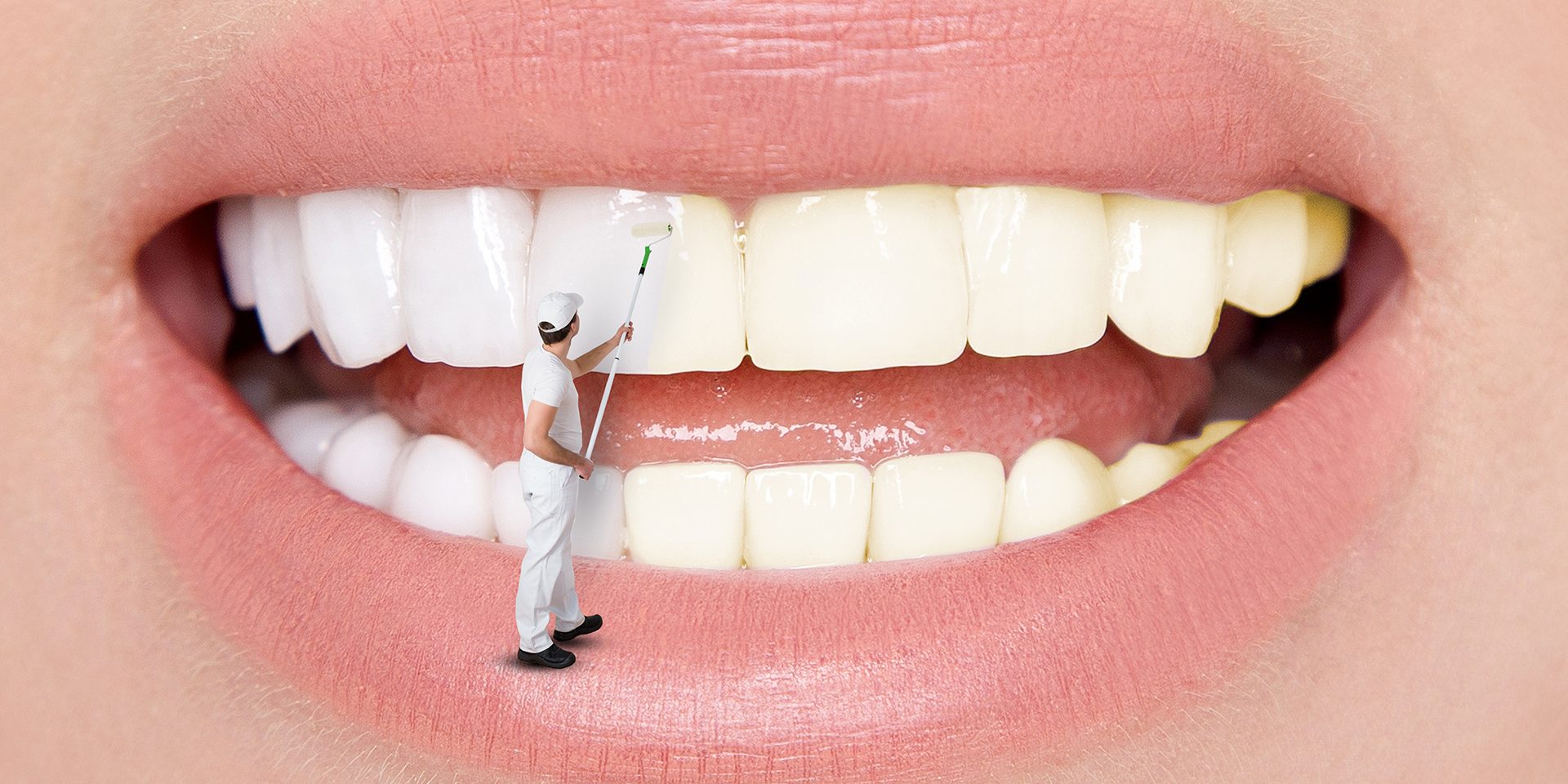What are Teeth Whitening Methods?
Teeth whitening in the office / clinic
Teeth whitening at home
Combined teeth whitening (Both home and office whitening)
Internal Bleaching (Whitening the inside of the tooth)
Which is the most effective teeth whitening method?
The most effective teeth whitening method is combined whitening, which combines office and home whitening.
Office Type Teeth Whitening
Office type teeth whitening method is a teeth whitening method that gives results in a shorter time than home type teeth whitening that can be applied by a physician in a clinic environment. As with home whitening, there are no dental stones etc. that will affect the whitening process. Negativities such as this should be eliminated.
The dentist begins the office bleaching application by first taking precautions to protect the gums and other soft tissues that may be damaged in the mouth. The gums are covered with a protective layer, preventing the tooth whitening agent from reaching the gums. The difference between this application and home whitening is that the active ingredient of the chemical used is higher and it must be used under the supervision of a dentist. Office whitening, which gives faster results than home whitening, provides a much deeper whitening of the teeth when applied with light sources such as LEDs or lasers.
Situations where teeth whitening can be applied
Physiological discoloration that lasts a lifetime.
Coloration occurring after amalgam filling.
Use of antibiotics during infancy.
Discoloration of the inside of the tooth due to root canal treatment.
Discoloration of the surface of the tooth due to the use of coffee, tea, tobacco, red wine and mouthwashes for a long time. The
living tissue inside the tooth as a result of trauma. Discoloration that occurs due to bleeding inside the tooth after it dies.
Whitening mechanism in teeth
In the teeth whitening process, colored organic and inorganic substances formed in the porous enamel structure on the top layer of the teeth are removed with tooth whitening gels (carbemide peroxide).
Home Teeth Whitening
Personalized whitening trays are prepared by taking measurements from inside the mouth. Certain amounts of whitening gel (10-15% carbamide peroxide) is applied into this prepared plate.
Home teeth whitening treatment duration
It is a treatment applied by the patient himself, using the plates for at least 2-6 hours during the day, preferably at night, over an average of 10-15 days.
How to apply gel into the plate
The most important point to consider in home teeth whitening is not to apply too much gel. If too much is applied, the gel overflowing from the plaque will irritate the gums. In such a case, the gums should be washed immediately and a cream containing vitamin E should be applied to the irritated surface.
Disadvantages of home whitening
Long treatment period lasting between one week and one month
Not using beverages such as coffee, cola, etc. that cause teeth discoloration during the treatment
Staying away from cigarettes and similar bleaching substances until the application is completed
Damage to the gums as a result of careless behavior when placing the aligners on your teeth
Although it is easy for the person to use, it takes time. It is less preferred today due to reasons such as loss of color and not giving results in some deep colorations.
Combined Teeth Whitening
It is a teeth whitening method in which both office and home types are applied. After teeth whitening is performed in the clinic, gel is applied into the trays specially prepared for the patient and the process is supported with home whitening for 4-6 days.
Internal Whitening
It is applied to teeth that change color after root canal treatment. After the filling in the tooth is removed, whitening gel is applied to the opened cavity. The tooth is then tightly sealed with a temporary filling. Sessions are repeated until the desired color is achieved.
Does internal teeth whitening cause any harm to the teeth?
The channel filling must be insulated very well. If it is well insulated, it does no harm.
What are the harms or side effects of teeth whitening?
Apart from non-vital teeth (with root canal treatment), whitening methods may also cause a little sensitivity in the teeth. This tooth sensitivity; It may be against the weather, very hot or cold food and drinks. This is a normal and expected side effect. Tooth sensitivity is generally expected to disappear within 24-48 hours. When an unexpected situation occurs, a doctor should be consulted.
How long does the teeth whitening treatment take?
Teeth whitening varies from person to person. The average whitening time is 2-3 weeks. The more yellowing of the teeth without graying, the more effective the whitening can be. Graying caused by antibiotic use is more difficult to whiten and it may take a longer time to achieve results.
Is it necessary to clean the whitening tray?
Yes it should. After use, the plates are washed with liquid soap and rinsed thoroughly. After making sure that they are dry, you should keep them in the box we provide you.
How effective and permanent is teeth whitening?
After whitening, the color begins to fade over time. This period varies depending on the patient’s use of colored liquids (tea-coffee-wine-cola) and smoking. It takes between 6 months and 1 year. Teeth whitening becomes permanent if supported with 1 or 2 sessions every 4-6 months.
What should I consider when whitening my teeth?
During whitening, colored liquids such as tea-coffee-wine-cola and tobacco products should be strictly avoided. If used, the process will have an adverse reaction and the teeth will become discolored.
Does the whitening process harm teeth?
Whitening performed under the supervision of a dentist does no harm to the teeth. Otherwise, we would not do this practice to both ourselves and our loved ones.
What is laser teeth whitening?
Laser teeth whitening method is used to activate the whitening medication applied to the enamel surfaces and shorten the time.

